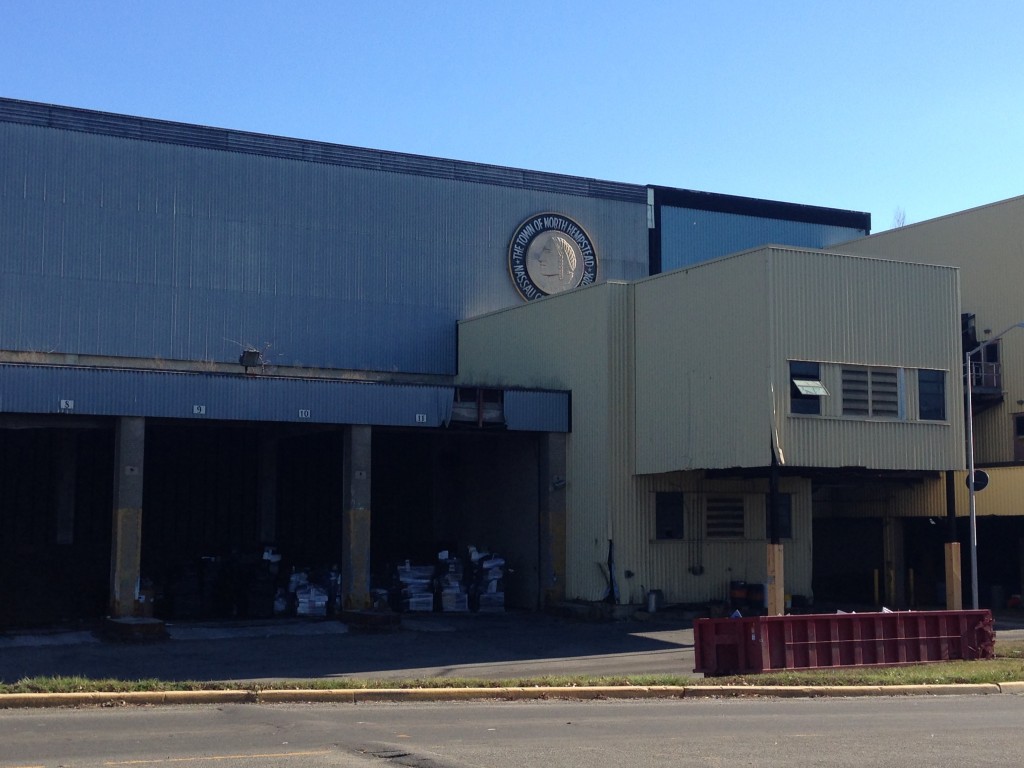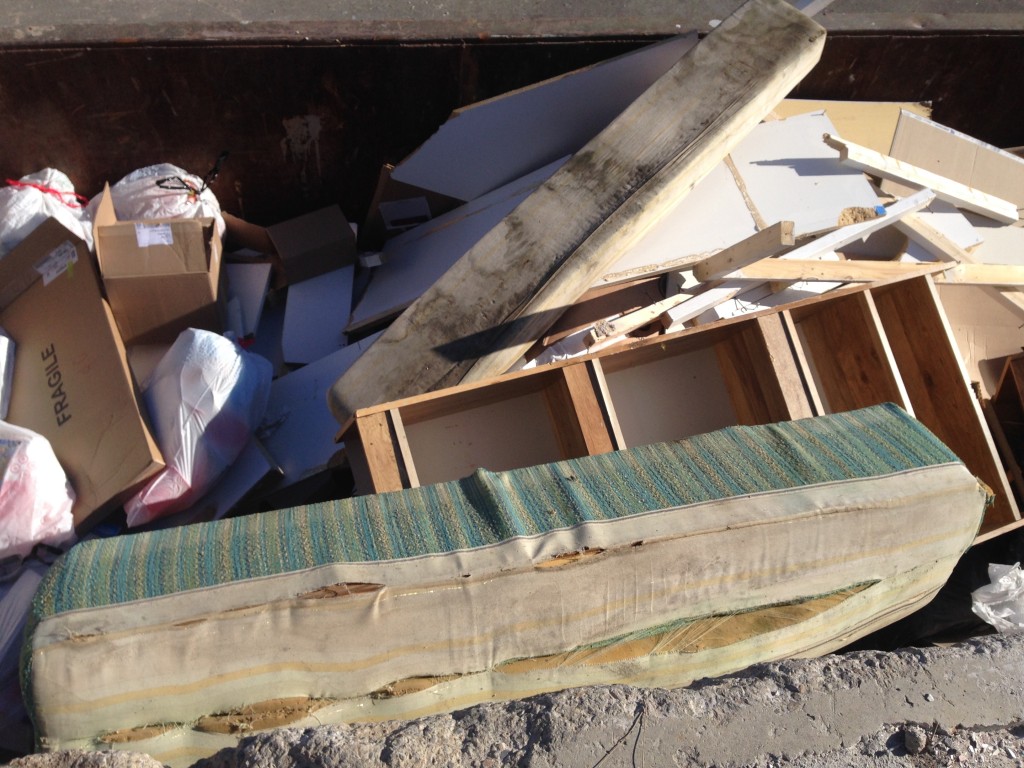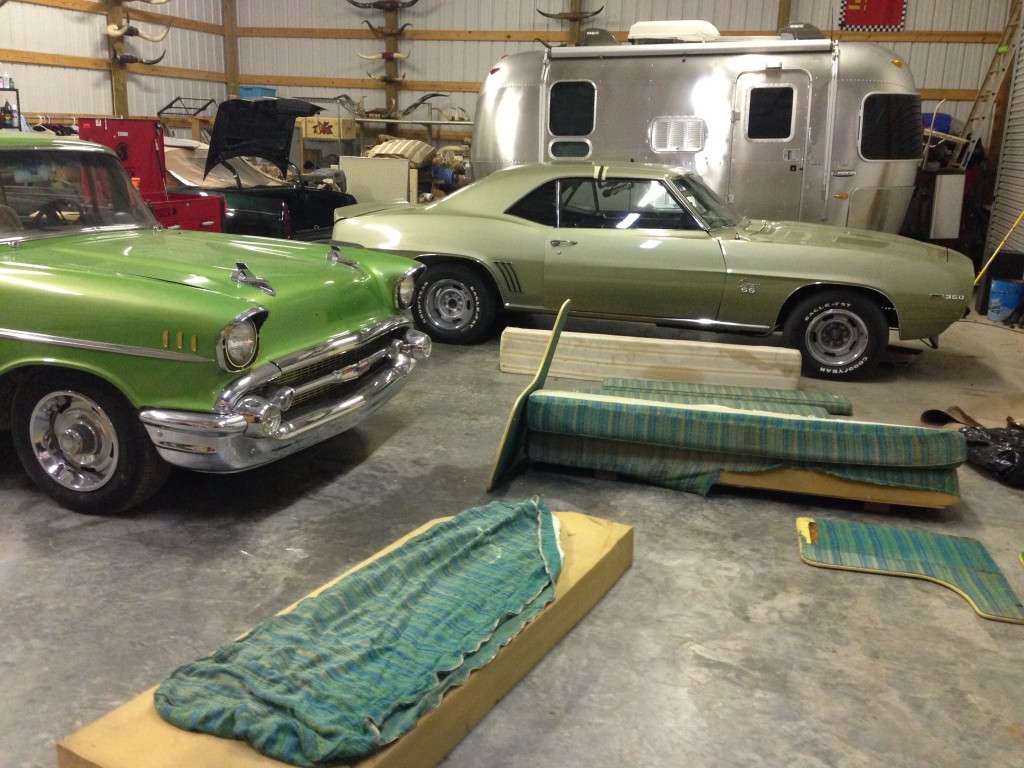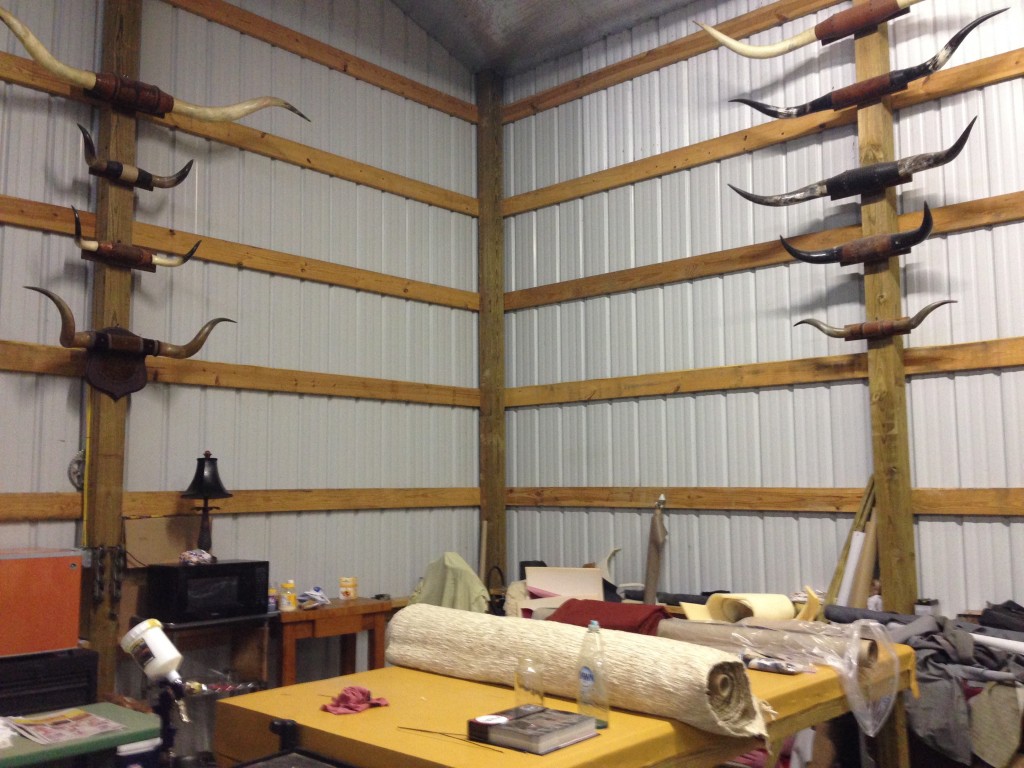Back home in New York, I started working on the next steps to fabricate my new, eco-friendly trailer cushions. First, because I have two Airstreams – a ’69 Trade Wind and a Safari for parts – I’d ended up with two sets of 47-year-old cushions and only needed one, to give to the upholsterer for use as templates.
Since the second set of cushions were by now moldy, torn and faded, I didn’t see any other option but to haul them to the dump as landfill. In any green renovation project, sending materials that won’t biodegrade to the landfill is the last thing you want to do. It’s a failure of the original design to consider the end of their life or consider potential re-use, and it’s a failure on my behalf and / or of current technology to find a healthier way to dispose of or re-use the materials.


Next, I removed the original Trade Wind cushions and a couple of other parts from the trailer. I carefully photographed & noted all of the measurements for each cushion as a reference.
I got back to NC this week, and immediately drove down to see upholsterer Obed Solano of Obed Upholstery. He had come highly recommended to me by the Goransons at The Stock Market (who you’ll remember had sold me some of the fabrics we’ll be using). They’d mentioned that Obed specializes in automotive upholstery, which was to my benefit because it’s apparently different than the process for making upholstery for home furnishings. Happy for the recommendation from people I trust, I walked into the shop and knew immediately I was in the right place:

Obed and I spent the better part of an hour talking about the classic cars in his shop, reviewing some of his handiwork, and discussing the scope of my project together. Then we laid out the Airstream cushion templates and looked at the material I’d purchased. It turns out that I have to pick up some more fabric to replace the white and gold backing material that was on some of the cushions. Obed suggested tweed for its sturdiness, so I took some photos of his samples in order to consider the colorways and to do more research on how sustainable the product is. I’ll also need to look into buying appropriate filler materials (latex, down & feathers, felt, &c.) to insert into the cushions for padding and support.

We decided that my homework assignment is to investigate eco-friendly materials and bring him my findings, and his assignment is to take measurements of the cushions and the fabric we have on hand and determine how much more I’ll need to buy. Then I’ll get him what he needs to get started. In my next post, we’ll cover sourcing materials and reviewing their ecological merits. And, l hope to have some photos of the start of fabrication for you as well!
[UPDATE 11/1/16: I had one last polyurethane foam cushion that needed to be recycled, if possible. I’d decided to make a better effort to process the foam through a company that recycles these materials professionally, even paying for discarded material. I managed to find one such company about 20 minutes from where I live, and was encouraged by the recycling symbols prominently displayed on their website. When I called and finally reached a manager and explained what I wanted to do, I was told that they wouldn’t accept it, that they only dealt in large quantities, and recommended that I discard my foam through normal residential channels as landfill. So sadly, my discovery was that this particular company was less interested in recycling (even when I was giving them material they usually paid for for free) unless it meant they’d make a lot of money on it. Whether they lacked the infrastructure or the interest, I’m not sure, but I ended up discarding the foam as landfill sensing that this was a common business practice and knowing that I was running out of time to complete my renovation and hit the road.]




